February 2011
Graffiti, by its nature, is forever changing. At the same time, it’s always there, somewhere, crumbling off a painted wall, or carved more enduringly. Usually seen as an ‘urban blight’, but visible in more rural locations too. It continues to take many forms, some accomplished, some irritating.
Spray-painted graffiti/art
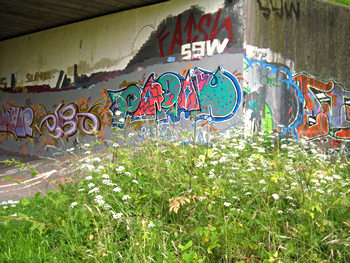
Colourful creations on the York-Selby cycle track, July 2009
Personally, I don’t feel better about my world if I see a load of greyish concrete, and as far as I’m aware, grey concrete underpasses usually have no architectural merit. So if I’m cycling down one of the urban cycle tracks and see colourful embellishments of the more skilful variety covering a bit of grey concrete, I’m often cheered up, rather than offended. And I know I’m not alone.
There are already pages on this site on the subject of graffiti, but I make no excuses for returning to it again. I’ve collected photos of interesting examples while on my wanders/cycle rides, including this example. A piece in the local Press towards the end of last year included a photo showing Mayor Sue Galloway in this area – in one of those obviously staged publicity shots – covering up graffiti with cream paint, while surrounded by people on a community payback scheme.
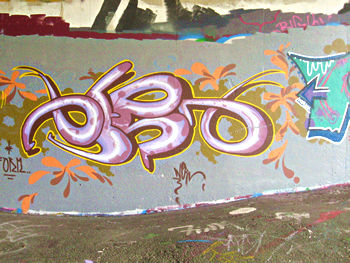
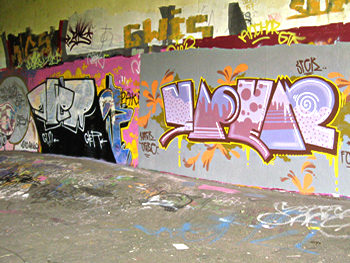
The clean-up apparently also involved genuinely useful efforts – to tidy up litter and to remove the random ‘tagging’ also spray-painted on nearby structures. I have to say I’d rather they’d concentrated their efforts on this. But obviously the background of the colourfully graffitied wall made a better shot for the local paper than Mayor Galloway scrabbling about after crisp packets in the grubby shrubbery.
Which is proof, perhaps, that this exuberant graffiti wall has some artistic merit, and perhaps should have been left as it was. An amusing letter to the Press expressed similar sentiments.
Graffiti of this type is an easy target for a publicity stunt, but is the type of graffiti that upsets most people the least.
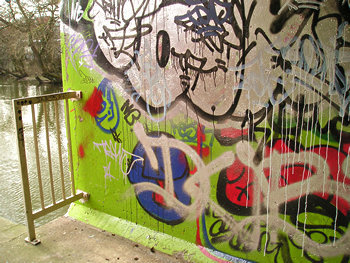
Foss-side graffiti, March 2008
In fact, many of us like it. Utilitarian concrete spaces under roads are not generally attractive – they’re grim. If people want to cover them in jubilant colourful designs, it’s not something I feel troubled by. As long as they take their litter home (another big subject for another page) and confine their efforts to ugly grey concrete underpasses and the like.
It may have been noticed by many people that the more accomplished, artistic, witty graffiti isn’t covering vast areas of town. There’s a general, though variable, code on what’s an acceptable canvas and what isn’t.
The Urban Dictionary includes many definitions and descriptions of graffiti, what it is and what it isn’t, what’s acceptable and what’s not. I noticed this posting, from ‘Suke-one':
‘there are things that are considered off limits and non ethical, and are not to be touched. some of these things include
residential property (unless its the house of a writter that you know personally and have beef with)
churches or places of worship
cemeteries
cars (unless obviously abandoned)
These are only the basics and different writters may restrict themselves from other things.’
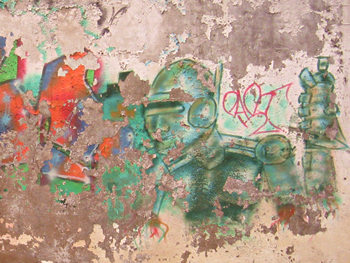
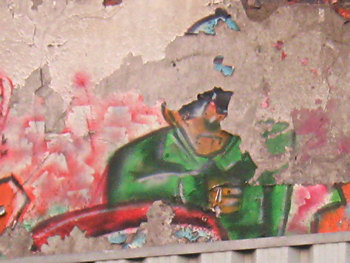
This faded and peeling graffiti on the wall of a disused garage on Penley Grove Street was photographed in December 2010, shortly before the garage was demolished.





Thank you for adding a comment. Please note that comments are moderated, but should appear within 24 hours.